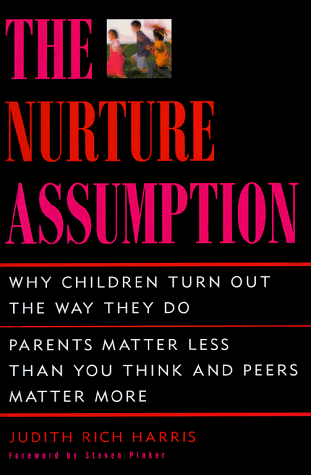Science
A Striking Similarity: The Revolutionary Findings of Twin Studies
The British psychologist Cyril Burt had been accused of falsifying the results of twin studies and related research into the heritability of IQ.

“I have looked at the data, and I’m collecting the data, and I’m still absolutely astounded. I still haven’t settled down and absorbed this kind of a finding yet. How long is it going to take me?”
These words were uttered by Dr. Thomas J. Bouchard, research director of the Minnesota Study of Twins Reared Apart (MISTRA), during a conversation with the Danish professor of psychiatry, Niels Juel-Nielsen, in May 1981. Bouchard was trying to come to terms with the revolutionary implications of his own research into identical and fraternal twins reared apart. 16 years earlier, Juel-Nielsen had published the book Individual and Environment—a study of 12 Danish identical twin pairs reared apart. Prior to 1981, this was one of only three studies of separated twins: the others were a 1937 American study of 19 twin pairs, and a British study conducted by James Shields in 1962 of 44 twin pairs.
An archived recording of their remarkable exchange was rediscovered in 2011 by the twin researcher Dr. Nancy L. Segal. In her 2012 book Born Together—Reared Apart, Segal writes that Bouchard’s incredulity reveals the degree to which his new findings contradicted his own assumptions and the prevailing wisdom about the importance of environment in shaping a person’s traits, prospects, and outcomes. The scholars’ amazement is palpable as they discuss the exciting and groundbreaking conclusions suggested by Bouchard’s new data.
The interview with Juel-Nielsen was not recorded for transmission, but for the purposes of transparency. Shortly after his death in 1971, the British psychologist Cyril Burt had been accused of falsifying the results of twin studies and related research into the heritability of IQ. The accuracy of this allegation, and the degree to which it invalidated Burt’s findings, remain hotly contested, but the controversy significantly damaged the status of hereditarian hypotheses. Determined to avoid having his own research tainted with the same suspicions, Bouchard meticulously documented and collected his investigations on photographs and video, of which the Juel-Nielsen interview is a fascinating fragment.
The Jim Twins
Two years before this interview, in the spring of 1979, one of Bouchard’s students had drawn his attention to the story of Jim Springer and Jim Lewis. Springer and Lewis were identical twins, separated just four weeks after they were born. They had grown up in separate families, 40 kilometers apart, and only met one another for the first time at the age of 39. Astonishingly, they shared many uncanny similarities: both had married women named Linda, followed by women named Betty; both had named their son James Allen; both were diligent amateur carpenters; both were heavy smokers; their favorite beer was Miller Light; both bit theirs nails; both encountered heart problems in their 30s; and both had suffered from migraine attacks at the same age.
Bouchard immediately set about securing the funding needed to complete a detailed case study of the twins. Keenly aware of the rare opportunity identical twins reared apart offered researchers of psychology, Bouchard told a New York Times reporter that he was ready to “beg, borrow, or steal” to raise the necessary funds. The Jim twins provided an almost perfect control experiment; they were genetically identical but raised in separate environments, so any differences between the two men could be attributed to environmental influence and separated from the influence of their shared genetic inheritance.
A week after the story appeared in the Times, Bouchard had the Jim twins flown to Minnesota where they were tested for close to a week.
Virtually Identical Scores
In the interview with Niels Juel-Nielsen, Bouchard explained his initial skepticism regarding the validity of the psychometric testing used to measure IQ:
I’ve always thought that tests were interesting, useful and a valuable contribution from psychology, but I was always cautious about them. I was feeling, like there was a larger range of error than was desirable. But now we have studied 21 sets of identical twins and we have a good number of cases who have virtually identical profiles on some of our psychological tests. This evidence has persuaded me that our tests in many instances are even better than we thought they were. In fact, I can’t think of any more convincing evidence than seeing two identical twins reared apart come in, take a test and get very similar scores. It’s quite striking! And although our data are just preliminary—we hope to gather many more twins—it’s pointing to the conclusion, that twins reared together in the same family are as similar as they are primarily for genetic reasons, not for reasons of their environment.
Bouchard then added, “I noticed that when I told you that a few days ago you were not a bit surprised.”
Juel-Nielsen: No, then, first of all I had a few cases demonstrating that. And James Shields found the very same thing. In his separated cases, the twins were even more similar in personality traits than those who had been brought up together.
Bouchard: This kind of finding, though, it seems to me, threatens a great deal of psychological theory. There is a lot of theorizing in psychology about the tremendous importance of the family situation, the peculiar things that happen when you are growing up. And we turn around and we look at these twins that have been reared in entirely different families and they are just as similar as twins reared in the same family!
“In What Respect Were the Twins Strikingly Similar?”
Juel-Nielsen: One could try to ask: In what respect were the twins strikingly similar, obviously similar? And where did they differ, strikingly? Then I could briefly summarize my findings. I would like to hear your comment. First of all, they looked alike!

Bouchard: Oh boy, no question. [laughs]
Juel-Nielsen: Your physical appearance, your hair and eye color, your face, the way you walk, the way you smile, the way you talk—all these mannerisms were strikingly alike. If, for instance, I talked with two twins on the phone, I could easily mistake them. If I saw them from behind, again, confusion. Many psychologists say that it’s easy to explain family resemblance. They are identifying with each other, so they consciously or unconsciously imitate each other. Or a boy develops like his father, and so on. But these reared apart twin studies demonstrate clearly that this hypothesis is not at all accurate. That is because you see the similarities between relatives, who have never met and do not know about each other or their families. This is very important! Behavior is part of your personality and will affect your environment to some degree. If you go deeper into it, as you are investigating the brain waves, you’ll find that they are as similar, as if you examined the same person twice. At one point or another you will, of course, find differences. But as you stated it: What is a difference? Is there a difference if you have an IQ-difference of say 5 points?
Bouchard: It’s still within the standard error of the instrument.
Juel-Nielsen: So, it is not a difference.
Bouchard: We have many cases where, for all practical purposes, there really is no difference. In fact, we have two sets of twins, who differ by just one point. They are remarkably similar.
Juel-Nielsen: So what’s needed are, perhaps, environments that differ more than environments do in general. I think it was Francis Galton who said something like: ‘Nature prevails enormously over nurture, provided you study twins within the same rank of society.’ What he meant was that if you have differences that are unusual from one home to another, such factors might create a difference, but what is ubiquitous in society makes no difference.
Bouchard: Yes. One of the consequences, I point out to my classes, but that does not really seem to get into the public consciousness, is that as we create more and more egalitarian and equal societies with equal opportunity, the differences between individuals become increasingly more and more genetically based. The differences don’t go away. The overall range may be reduced somewhat, but the differences don’t go away. They become more and more genetic. This is sort of a paradoxical finding, if you are an environmentalist. But if you believe that there are genetic differences, then it’s a natural consequence.
Correlations
It’s been 37 years since this conversation took place. In the intervening decades, Bouchard continued his study of identical and fraternal twins and MISTRA collected convincing data demonstrating the powerful influence of genes. In total, Bouchard studied 137 twins reared apart and what had so astonished him in 1981 is, by now, well supported. Twin studies designed to uncover the genetic influence on behavioral and mental traits have gone from ignored or derided to widely accepted.
In studies that omit anecdotal evidence of the striking similarities of twins (that laymen and researchers alike find so fascinating), heritability is found to be between 0.2–0.8 for a variety of traits and characteristics. Roughly speaking, this means that between 20 percent and 80 percent of the differences in a trait or characteristic (e.g., extraversion) can be explained by differences in genes.* When it comes to personality traits, depression, and phobias, twin studies have shown that there is more room for the environmental influence. At the low end, heritability for phobias and depression range between 0.2 and 0.4. Personality traits—specifically, ‘The Big Five’ of extraversion, openness, agreeableness, conscientiousness, and neuroticism—range from 0.4–0.6. And, at the top end, the heritability of intelligence scores about 0.75.
These findings tell us how much of the variance in a current trait is caused by variance in genetics. A finding of ‘zero’ means there is no correlation at all, while 1.0 indicates a perfect match. But psychometric tests are subject to a certain margin of error, because not even a single individual will return a perfect match if asked to sit the same test twice. But what twin studies have shown is that the general intelligence measured by IQ is significantly influenced by genetics, and that heritability increases with age—the correlation at age five is 0.22, at age seven it rises to 0.40, at age 10 to 0.54, and from 18 years of age into adulthood the heritability of intelligence approaches 0.80. In an article published in 2013, Bouchard called this phenomenon the Wilson-effect.1
The Three Laws of Behaviour Genetics
In 2000, the psychologist Eric Turkheimer concluded that the evidence from behavioral genetic data was consistent enough to summarize in three laws. The first law holds that all human traits are heritable (i.e., genetic differences account for phenotypic differences) to some degree. This assertion may not seem all that surprising today, although the word ‘all’ is still considered provocative by some. However, twin studies have produced copious data demonstrating that almost every trait is heritable to some degree or another.

The remaining two laws concern environmental influence. The second of these holds that the effect of being raised in the same family is smaller than the effect of genes. Judith Harris called attention to this theory in her 1998 book The Nurture Assumption, and was subsequently defended by Harvard psychologist Steven Pinker in The Blank Slate. Pinker encouraged parents to stop fretting about what they had or had not done in order to turn their offspring into wonderful individuals. Parents, he argued, do not hold their children’s future in their hands, only their present. Pinker emphasized that parenthood remains an awesome ethical responsibility, and that it is important to give one’s child a childhood worth remembering. But parents cannot shape a child’s personalities and IQ as a sculptor fashions clay. As Dr. Nancy Segal has put it, homes do matter, but they do not make people alike.
The third law holds that a substantial portion of the variation in complex human behavioral traits is not accounted for by either the effects of the genes or families. In other words, while about 50 percent of the variation is due to the environment, this environmental effect does not come from the family. Instead, it may be produced by the wider culture, society, the neighborhood, school, peer-groups and friends, but also simply chance: random encounters or openings in the social hierarchy, cosmic rays that damage a piece of DNA, neurons that go zig instead of zag, and so on.
Twin studies have uncovered the enormous importance of genetics. They have laid to rest the notion that parents are omnipotent sculptors, and a child is a piece of clay. They have hammered another nail into the coffin of the Freudian guilt complex, where everything that goes wrong in an individual’s life may be attributable to poor parenting.
Nevertheless, questions remain—twin studies have not been able to identify conclusively the environmental factors that make up the remaining ‘nonshared’ variation. The answers may require us to capsize even more articles of faith and received wisdom in our pursuit of knowledge and understanding. Thomas Bouchard had difficulty coming to terms with his preliminary results in 1981, but he had the integrity to follow the data wherever they led him. It remains to be seen if others will have the courage to follow his example.
*This sentence has been amended.
Reference:
1 Bouchard, T. (2013). The Wilson Effect: The Increase in Heritability of IQ With Age. Twin Research and Human Genetics, 16(5), 923-930. doi:10.1017/thg.2013.54






